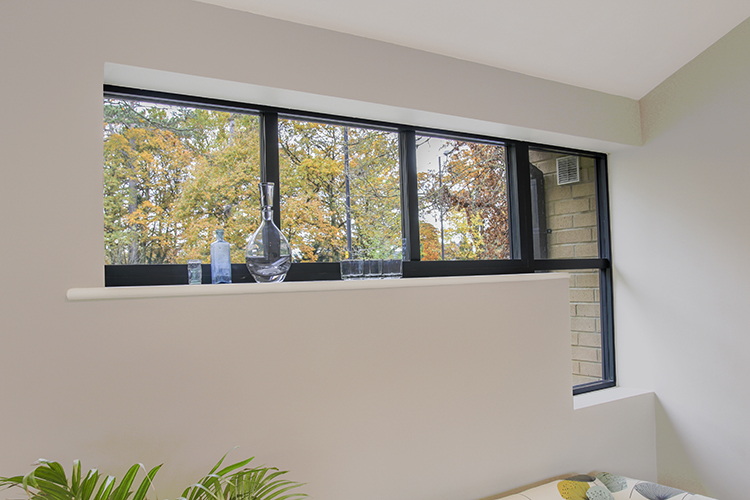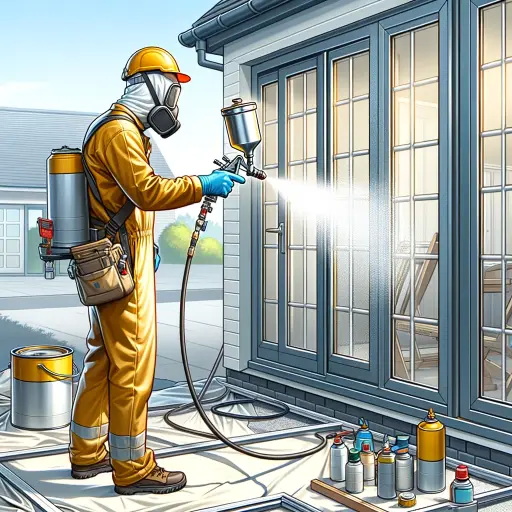English


Views: 222 Author: Dream Publish Time: 2025-01-23 Origin: Site











Content Menu
● Understanding the Need for Insulation
● Methods to Insulate Aluminum Window Frames
>> 2. Caulking
>> 4. Thermal Curtains or Blinds
● Advanced Techniques for Enhanced Insulation
● FAQ
>> 1. What are thermal breaks in aluminum windows?
>> 2. How effective is weather-stripping?
>> 3. Can I install window film myself?
>> 4. Are insulated curtains worth it?
>> 5. How often should I check my window insulation?
Aluminum window frames are popular for their durability and modern aesthetic. However, one significant drawback is their thermal conductivity, which can lead to energy loss and uncomfortable indoor temperatures. Insulating aluminum window frames is essential for improving energy efficiency, reducing heating and cooling costs, and enhancing overall comfort in your home. This article will explore various methods to effectively insulate aluminum window frames, providing a comprehensive guide for homeowners looking to improve their windows' thermal performance.

Aluminum is a highly conductive material, meaning it transfers heat quickly. In colder months, this can result in cold drafts entering your home, while in warmer months, it can lead to heat gain. Consequently, insulating aluminum window frames helps to:
- Reduce Energy Costs: Proper insulation minimizes heat loss during winter and reduces the need for air conditioning in summer.
- Enhance Comfort: A well-insulated window frame maintains a more stable indoor temperature.
- Prevent Condensation: Insulation helps reduce condensation on windows, which can lead to mold growth and damage over time.
There are several effective methods for insulating aluminum window frames. Each method varies in complexity and cost, allowing homeowners to choose the best option based on their needs and budget.
Weather-stripping is one of the simplest and most cost-effective ways to insulate aluminum window frames. This method involves sealing gaps between the window sash and frame to prevent air leaks.
- Materials Needed: Self-adhesive foam strips or rubber seals.
- Installation Steps:
- Clean the surface of the frame to ensure proper adhesion.
- Cut the weather-stripping material to fit the edges of the window frame.
- Apply the weather-stripping along the sash and frame edges, ensuring a tight seal.
Caulking is another effective method for sealing gaps around aluminum window frames. It helps prevent air infiltration and enhances insulation.
- Materials Needed: Silicone-based caulk or acrylic latex caulk.
- Installation Steps:
- Inspect the frame for cracks or gaps.
- Clean and dry the area around the gaps.
- Use a caulking gun to apply a continuous bead of caulk along the joints.
- Smooth the caulk with a damp finger or tool for a neat finish.
Applying insulating window film is an excellent way to improve thermal performance without altering the appearance of your windows significantly.
- Materials Needed: Low-emissivity (Low-E) window film.
- Installation Steps:
- Clean the glass surface thoroughly.
- Cut the film to size, allowing extra material for trimming.
- Apply a solution to activate the adhesive on the film.
- Carefully place the film on the glass, smoothing out any bubbles as you go.
Using insulated curtains or thermal blinds can significantly enhance insulation by adding an extra layer between your windows and indoor space.
- Materials Needed: Thermal-lined curtains or cellular shades.
- Installation Steps:
- Choose curtains or blinds that fit your windows well.
- Ensure they cover the entire window area and extend beyond the edges for maximum insulation.
- Close them during cold nights or hot days to maintain indoor temperatures.

Draught stoppers are simple devices that can be placed at the base of windows to block cold air from entering.
- Materials Needed: Fabric tubes filled with sand or rice (or store-bought draught stoppers).
- Installation Steps:
- Measure the width of your window base.
- Place draught stoppers securely against the bottom of your windows when closed.
For those looking for a more permanent solution, installing thermal breaks within aluminum frames can significantly reduce heat transfer.
- Materials Needed: Thermal break materials (often made from polyamide).
- Installation Steps:
- Consult with a professional for installation as this may require removing existing frames.
- Insert thermal break materials between inner and outer sections of aluminum frames during installation or replacement.
In addition to basic insulation methods, there are advanced techniques that can further enhance energy efficiency in aluminum windows:
Upgrading your glazing can dramatically improve insulation. Double or triple glazing features multiple layers of glass separated by an insulating gas like argon or krypton, which reduces heat transfer significantly compared to single-pane windows.
- Benefits:
- Reduces energy costs by minimizing heat loss in winter and heat gain in summer.
- Enhances sound insulation due to multiple layers of glass acting as barriers against noise pollution.
Injecting foam insulation into hollow spaces within aluminum frames can also enhance thermal performance. This technique fills voids that might otherwise allow heat transfer.
- Materials Needed: Spray foam insulation designed for windows.
- Installation Steps:
- Identify hollow sections within your aluminum frames.
- Inject foam insulation carefully into these areas until filled.
- Allow it to cure as per manufacturer instructions before sealing any openings with caulk if necessary.
To ensure optimal performance of insulated aluminum window frames:
- Regularly inspect weather-stripping and caulking for wear and replace as needed.
- Clean window films periodically to maintain clarity and effectiveness in reflecting heat.
- Ensure that thermal curtains are used consistently during extreme weather conditions for maximum benefit.
Insulating aluminum window frames is crucial for enhancing energy efficiency and comfort in your home. By employing methods such as weather-stripping, caulking, applying window film, using thermal curtains, installing draught stoppers, adding thermal breaks, upgrading glazing, or injecting foam insulation, homeowners can significantly reduce energy costs and improve indoor conditions. Each method has its advantages and can be tailored to fit various budgets and preferences.
Investing time in properly insulating your aluminum windows not only contributes positively towards reducing energy bills but also plays a vital role in creating an eco-friendly living environment. With rising energy costs and increased awareness about sustainability, taking steps towards better insulation is more important than ever.

Thermal breaks are insulating materials placed between different sections of an aluminum frame that reduce heat transfer between indoors and outdoors. They help improve energy efficiency by minimizing thermal bridging.
Weather-stripping is highly effective at sealing gaps around windows, significantly reducing drafts when installed correctly. It's an affordable option that can lead to noticeable improvements in comfort.
Yes! Installing window film is a DIY-friendly project that requires minimal tools. Just ensure you follow instructions carefully for best results.
Insulated curtains can be very effective at reducing heat loss through windows, especially when used in conjunction with other insulation methods like weather-stripping or caulking.
It's advisable to inspect your window insulation annually, especially before winter months, to ensure seals are intact and no new gaps have formed.
[1] https://almenissy.com/how-to-insulate-aluminum-window-frames/
[2] https://glawindows.com/advantages-of-aluminum-insulated-frames-windows-2/
[3] https://esnaglass.com/aluminum/energy-efficient-aluminum-windows/
[4] https://www.youtube.com/watch?v=ArBH_HOdkJQ
[5] https://www.al-guard.com/articles/aluminum%20windows-aluminum%20doors-insulation%20window
[6] https://www.codmarsl.com/en/blog-en/energy-efficiency-in-aluminum-windows-everything-you-need-to-know/
[7] https://oridow.com/how-to-insulate-your-aluminum-windows-for-the-summer/
[8] https://ramwindows.com/the-benefits-of-thermally-broken-aluminum-windows-and-doors
[9] https://alcoi.in/6-ways-aluminium-window-frames-boost-energy-efficiency-in-homes/
[10] https://www.euro-glazing.uk/post/how-to-insulate-aluminum-window-frames
[11] https://diy.stackexchange.com/questions/237894/how-can-i-insulate-aluminum-window-frames
[12] https://rylock.co.nz/news/how-energy-efficient-are-aluminum-windows
[13] https://theheritagewindowcompany.co.uk/blog/increasing-energy-efficiency-with-aluminium-double-glazing/
[14] https://deltraglobal.com/5-ways-to-protect-your-aluminium-windows-in-winters-copy/
[15] https://www.dwsinc.net/blog/advantages-insulated-aluminum-windows-doors/
[16] https://www.knockdoors.in/how-can-aluminium-doors-and-windows-improve-energy-efficiency/
[17] https://www.supplyonlydoors.com/help-and-advice/how-to-insulate-aluminium-window-frames/
[18] https://aluminium-windows-and-doors.co.uk/thermal-break-technology-in-aluminium-windows-benefit/
[19] https://www.technal.com/en/tme/informations/blogs/aluminum-window-design-enhancing-efficiency-with-thermal-breaks/
[20] https://www.doityourself.com/forum/doors-skylights-windows/324922-insulating-aluminum-frames.html
[21] https://www.jh-aluminium.com/blog/The_Main_Advantages_of_Heat_Insulation_Aluminum_Windows_Doors_ID12.html
[22] https://camelglass.co.uk/latest-news/maximizing-energy-efficiency-how-aluminium-windows-can-save-you-money/
[23] https://moxisys.com/thermal-break-windows-and-doors/
[24] https://www.krcaluprofiles.com/blog/how-aluminum-window-profiles-improve-energy-efficiency/
Stainless Steel Grades 201 Vs 304: Cost Vs Performance Breakdown
316L Vs 316 Stainless Steel Grades: Which Is Better for Corrosion Resistance?
Comparing Austenitic Vs Martensitic Stainless Steel Grades: What You Need To Know?
Stainless Steel 430 Vs 304: Key Differences Explained for Manufacturers
304 Vs 316 Stainless Steel Grades: Which One Suits Your Project Best?
Stainless Steel Pipes Vs Galvanized Pipes: Durability And Cost Analysis
Comparing Stainless Steel Pipes And PVC Pipes: What You Need To Know?
Stainless Steel Pipes Vs Copper Pipes: Pros And Cons for Industrial Use
Seamless Stainless Steel Pipes Vs Welded Pipes: Key Differences Explained
Stainless Steel Pipes Vs Carbon Steel Pipes: Which One Suits Your Project?
